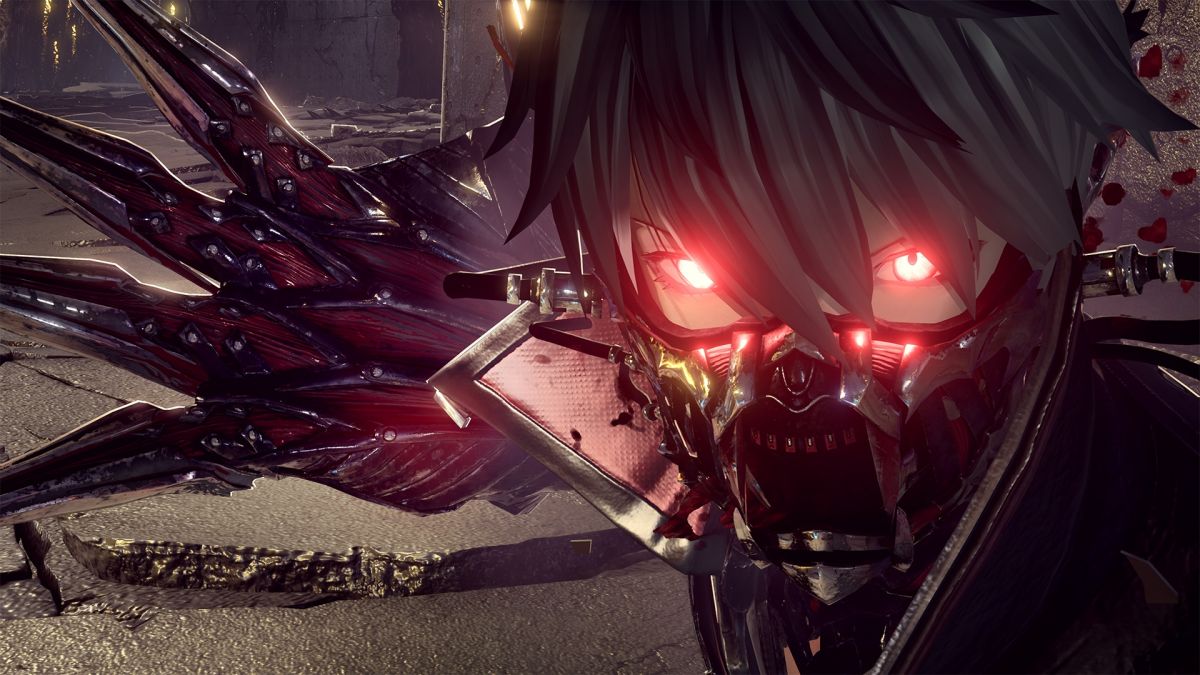
Disclaimer: Due to an unforeseen circumstance regarding the Xbox One review code of Code Vein we were originally supplied not working, Bandai Namco Entertainment UK graciously supplied an additional PS4 code for the purposes of this review, which is why our review is a day after embargo. In the interest of full disclosure, we feel this is important information to share.
Dark Souls has practically created a genre unto itself, which is dubbed Soulslike by the gaming community. Since FromSoftware’s output has grown to incredible popularity, with the Souls games, Bloodborne and Sekiro achieving great success, other games have attempted to imitate the same style. Code Vein, funnily enough from Dark Souls publisher Bandai Namco, is a good copycat that might just bring more potential players to the genre.
You control a Revenant (basically a vampire) that’s awoken in a world surrounded by a dangerous red mist and filled to the brim with dangerous monsters known as the Lost. With blood supplies at a minimum, you have the power to restore precious Bloodsprings and bring hope back to the Revenants trapped within the mist — that’s if you don’t get eviscerated by the hostile hordes first, or if you can make past the character creation screen anyway.
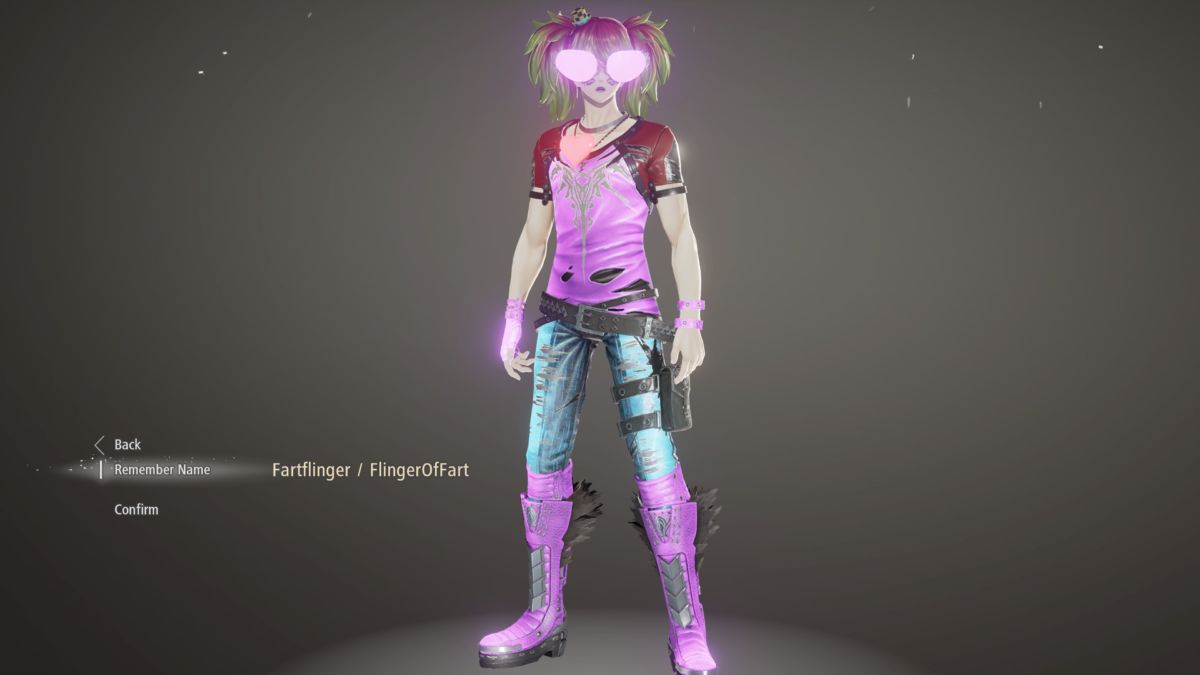
In an action RPG filled with difficult enemy encounters and boss fights, Code Vein’s waifu/husbando generator might just be the game’s best overall feature. That sounds like an insult to the rest of the game, but the creation tools here are so robust that it deserves to be celebrated. There’s so many options that you pretty much have the freedom to create the anime character of your dreams, though the creator could do with a little bit more in the way of body types and beard options.
The anime style in particular gives Code Vein a unique visual edge when compared to the likes of Dark Souls or the recently released The Surge 2, even if that edge is just more colours than usual. The character designs in particular should be appealing to anyone who loves Dead or Alive or felt like they needed a Dark Souls game with 100% more Gwynevere.
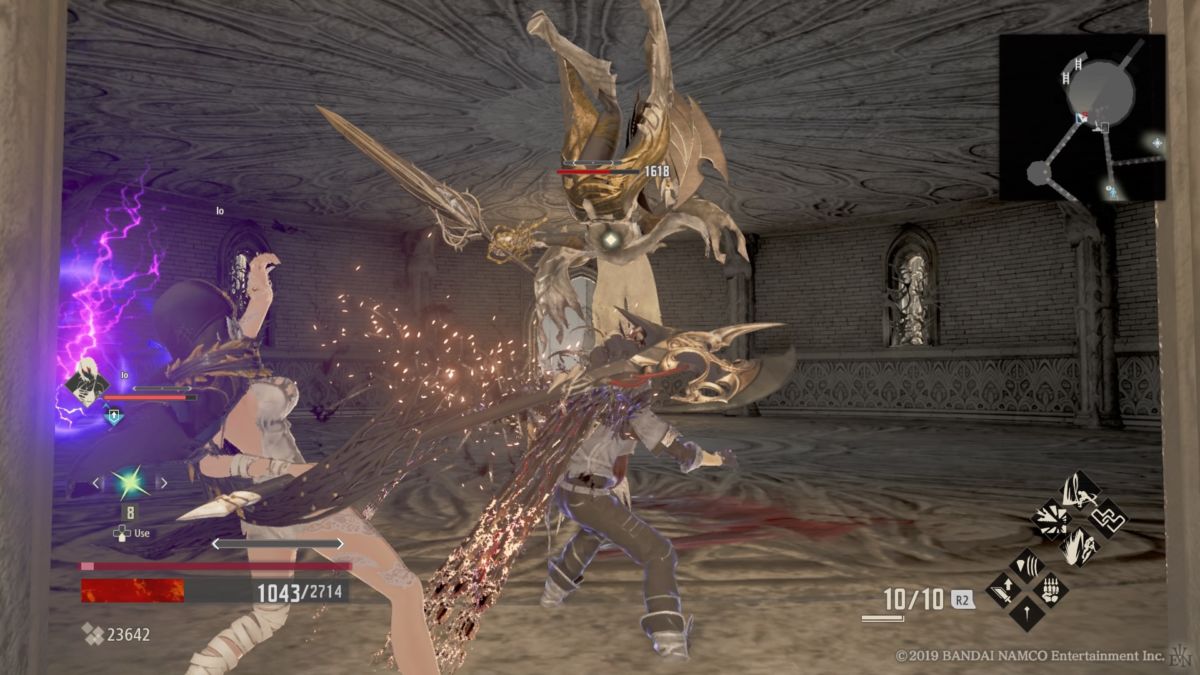
As for the overall premise, it’s fine if a little unspectacular. The main narrative arc is the same as it always is: a ruined post-apocalypse filled with hordes of enemies and “only you have the power to fix things” The characters themselves are okay as well, even if the writing is a bit weird. If you’re just here for the gameplay, you could just as easily skip the cutscenes.
Main storylines have never been the crux of Soulslike games; it’s the world-building and environmental storytelling that draws curiosity. Code Vein has that too in the form of Vestiges, which offer flashbacks into the lives of other characters, told through the lens of a faded memory. They’re cool the first couple of times, but after a few dozen, they outstay their welcome. Again, they could easily be skipped.

The combat, however, is much better, with your usual arsenal of light attacks, heavy attacks, blocking, dodging and parrying. If you’re already familiar with those core tenets of a Soulslike game, Code Vein should feel like muscle memory. As for newcomers, Code Vein feels more like an accessible entry into the burgeoning genre, giving players more tools and features with which to tackle the challenges that the game has to offer.
For starters, players are accompanied on their journey by an AI partner, or an online co-op partner if you prefer. This partner can make the hordes of enemies feel more manageable, drawing aggro when you’re under pressure or giving you vital healing when you’ve been knocked down. They’re a vital stepping stone for new players adjusting to the overall formula of the genre by providing a safety net, one that can easily be disabled by dismissing your AI partner. Consider it a “choose your own difficulty” setting.
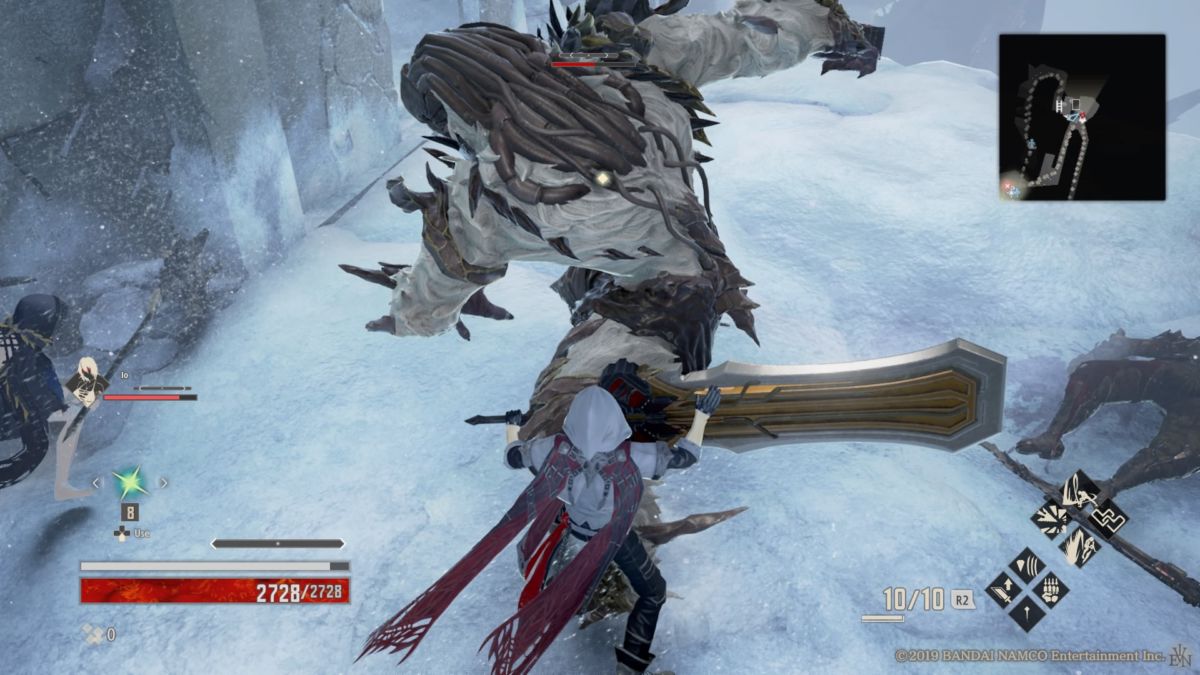
Exploration is rewarded with new tools, weapons and abilities or a shortcut to a brand new Mistle, Code Vein’s bonfire substitute. The Cathedral of the Sacred Blood showcases this the best, as it’s a sprawling network of interconnected walkways and passages. It’d be easy to get lost, but the mini-map and dotted line that shows you the path you’ve walked and where you’ve explored makes navigation much easier.
Blood Codes are arguably Code Vein’s biggest unique selling point when it comes to combat and exploration. Instead of picking a starter class then levelling up individual attributes to create the build you want, you instead just level up normally, increasing base stats at a nominal level. You then equip a Blood Code that boosts attributes in different ways, with specialisations in strength, dexterity, casting, ranged attack, support buffs and so much more. You’re able to shift between Blood Codes on the go, letting you play as the build you want without having to respec your character every single time.
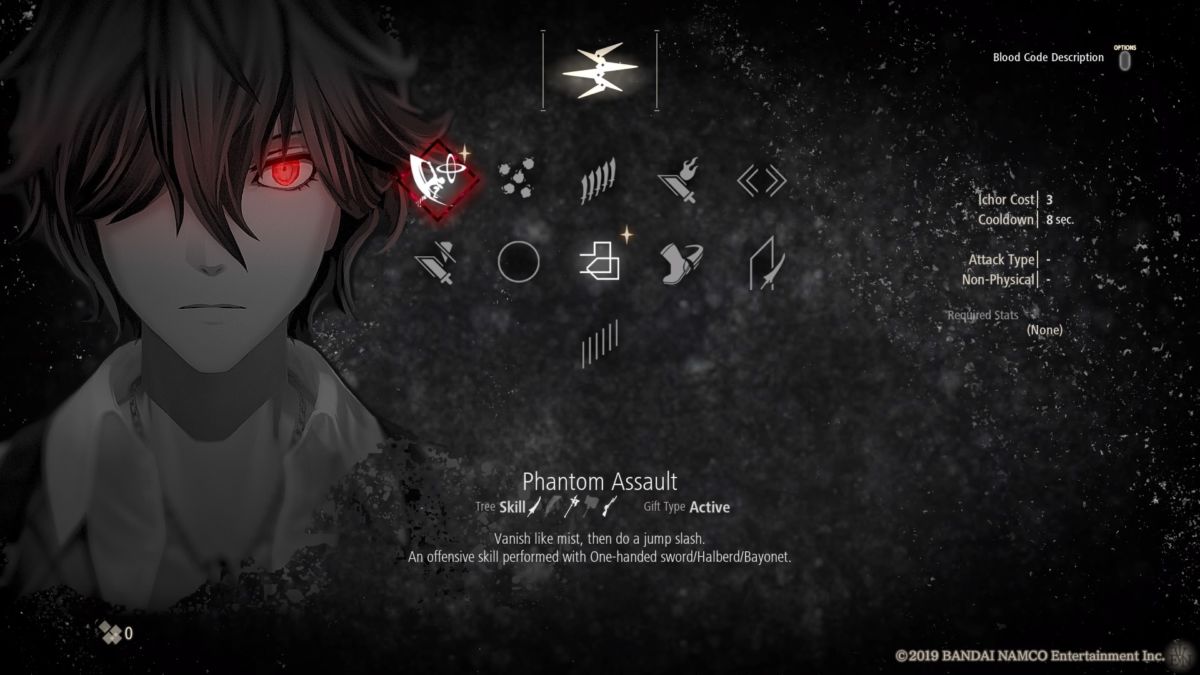
Each Blood Code comes with its own skill tree of active and passive gifts that you can learn to turn the tide of battle. You can then master these Gifts by killing enemies, and once mastered, they can be equipped on any Blood Code, which adds a new element of depth to creating your build. For those that like to delve deep into the minutiae of creating an ideal build, or simply min/maxing your way to an overwhelmingly strong attribute, this is the way to do it.
That said, there are some elements of the combat that just don’t feel right. Using active Gifts requires Ichor, which can be recharged by dealing and receiving damage. You can also temporarily increase your Ichor pool with parries, backstabs and drain attacks. The first two work great, but drain attacks take too long to charge to be an effective tool in your arsenal.
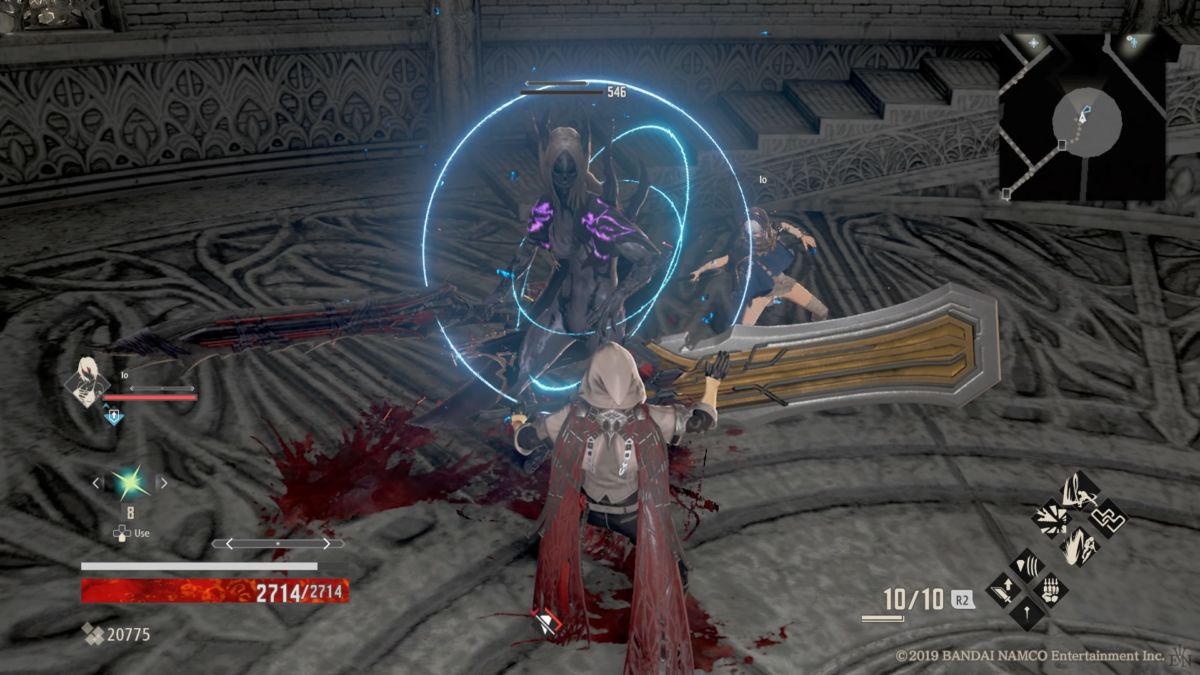
Players can also become focused if they dodge enough attacks, or simply take enough damage. Being focused unlocks new attack opportunities, like a combo drain attack tied to the R1+X button, or a launch attack with R1+Triangle. Added tools in your repertoire is always nice from a combat perspective, but they can feel unsafe to use in intense battles.
For a genre that’s defined by its boss fights, the encounters in Code Vein are serviceable, with a couple of cool designs and strategies to look out for. It can feel like certain bosses pull out massive, screen filling attacks that deal massive damage, without giving you a visible way of avoiding it. Fortunately, Code Vein is generous with its placement of Mistles, so if you are taken out, you can head right back into the fight in no time at all, and their health pools usually aren’t ridiculous, so no fight ever feels unwinnable.
I get the impression that Code Vein is trying to do a lot with as little as possible. The enemy types you encounter aren’t the most varied with some appearing throughout the game, and the majority of environments feature some kind of ruined city, though they do become much more varied after the first 6-10 hours. As for the bosses, the Cannoneer & Blade Bearer fight feels like a straight up re-do of Ornstein and Smough. One even takes the power of the other should they not be killed simultaneously, though that only happened to me in The Depths.
It’s The Depths that showcase Code Vein at its worst, as they are designed to be high level, dungeon-like areas that offer new challenges and rewards to the player. That’s the theory, but in practice, they’re just collections of reused environmental tiles/elements, enemies and even bosses. While optional, this whole portion of the game plays like a selection of deleted scenes from the main game, with the promise of better gear upon completion.
Despite all these issues, I still really enjoyed Code Vein, and that’s perhaps because it takes the Soulslike blueprint and breaks down the walls somewhat, creating an experience that’s less punishing for players. If you’ve been interested in the genre for a long time, but have been put off by the intense difficulty, Code Vein might be the game to dip your toe into.
MORE GAMING:
– 16 Best PS4 RPGs You Should Play
– 17 Best Xbox One RPGs You Should Play
– 25 Best PS4 Games You Should Own
Some of the coverage you find on Cultured Vultures contains affiliate links, which provide us with small commissions based on purchases made from visiting our site. We cover gaming news, movie reviews, wrestling and much more.


